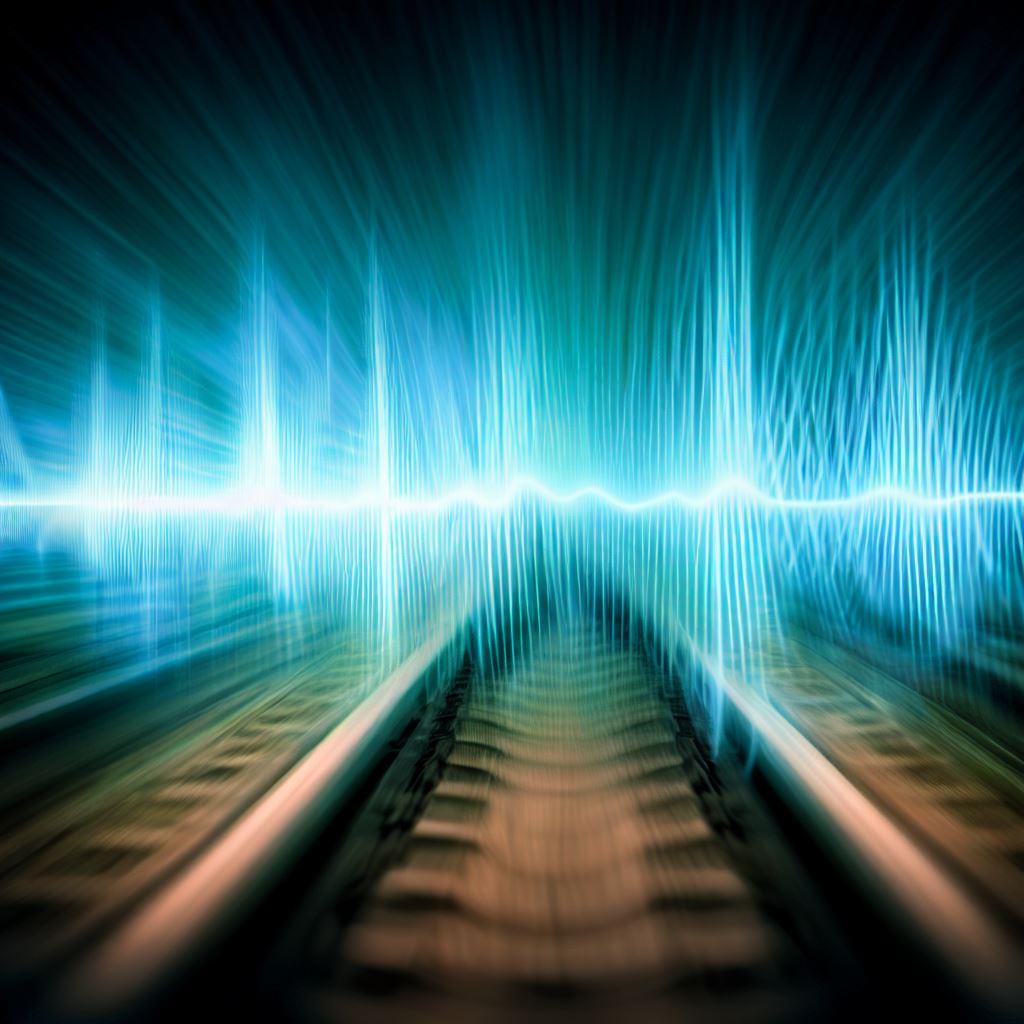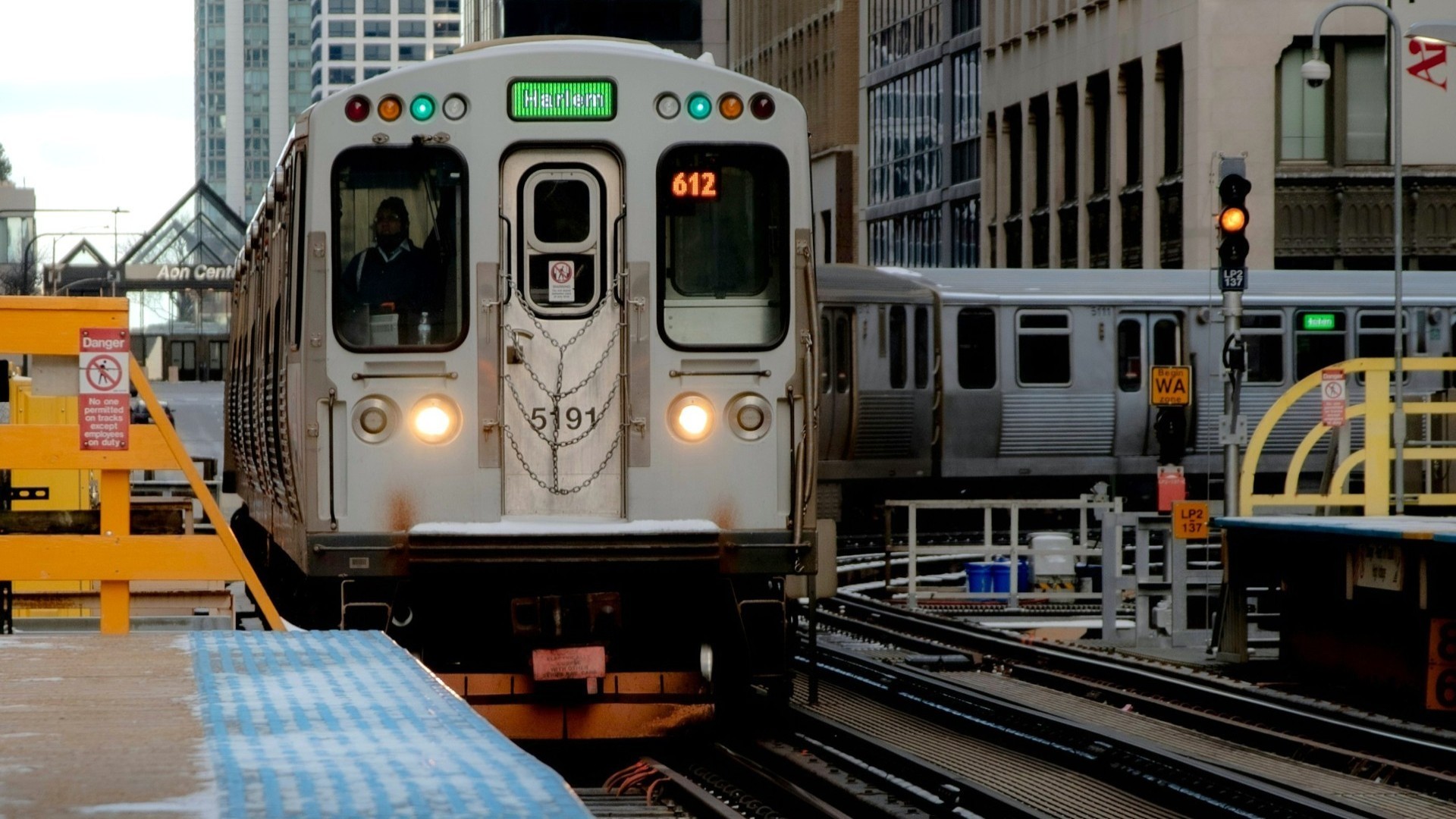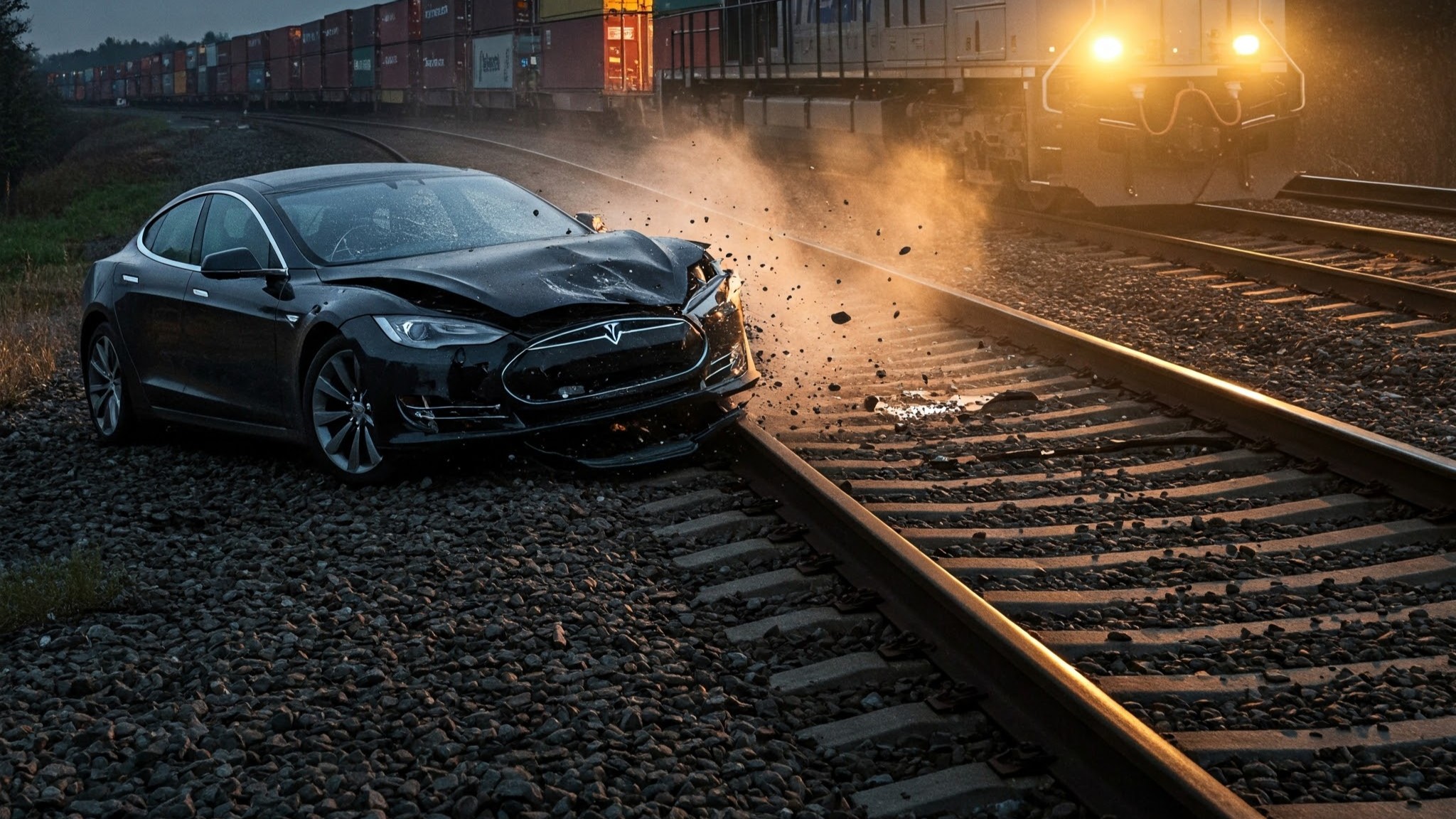Increase train density, improve track utilisation, raise operational security – all at once but with less personnel: Stakeholders throughout the whole railway industry are confronted with similar challenges. Over time, an almost unmanageable number of train and trackside-based tools have been established to help infrastructure organisations tackle these wished for improvements. By means of Fiber Optic Sensing, new possibilities arise to gain even more insights, while reducing the complexity of equipment needed.
FOS, DAS what?
While the highly specified systems in use harness various technologies, such as ultrasonic radar or inductive sensors, there are other options which are not that much established in the railway industry. Amongst these, approaches from the Fiber Optic Sensing (FOS) family seem most promising. Some years ago, field installations and tests have shown that out of this group, Distributed Acoustic Sensing (DAS) reveals the highest potential for valuable use in railways. DAS-based solutions are easy to install and work with a minimum of resources. The principle has been in use in other industries for decades. There it has proven its power when monitoring objects spread over wide distances, for example borders or pipelines. Due to the nature of DAS, long distances can be covered by one sensor with little effort but a maximum output. Let’s have a look at how this is possible.
How DAS this work?
In principle, DAS turns standard fiber optic cables into distributed acoustic sensors. To make this happen, we need a DAS unit, one spare fiber of a fiber optic cable, power supply – and that’s basically it. After connecting the fiber to the unit, laser pulses will be sent into the fiber. We at Sensonic use a pulse frequency of 2 kHz. As the pulse travels down the fiber itself, it scatters a small amount of light back to the unit. This light is called backscatter and the DAS unit records its signature. Now, what happens when vibrations radiate against the fiber: The backscatter will change. Based on the resolution and accuracy of latest DAS units, an exact measurement of the difference between the initial vibrational signature and the altered signature can be conducted. This difference indicates the intensity of a vibration. Additionally, it is possible to calculate the location of its source and thereby define whether it is static or continuous. In total, the character of such a change can be interpreted to identify its origin. But when it comes to railways, there are more things to be considered first.
Specific about Railway Industry
Whilst the environment of border fences or pipelines are rather homogeneous, a regular rail line will imply a broad range of vibrational sources. These range from moving rail vehicles or humans walking to static installations, such as diesel generator units, up to specific events like thermal pops, originating from the rail itself. But there will also be other sources, like industrial plants or roads. That said, filtering sources of interest becomes way more complex. What is more, especially when it comes to detecting changes in track health for example, we need a higher stability in terms of signal quality.
Over the past three years, we in Sensonic took on the role as a pioneer in establishing DAS-based solutions in the railway industry. To support this even more, we entered a joint venture with Sintela, who are market leaders in developing DAS units and tailor them to specific requirements. Together, we have improved existing solutions and brought them to a next level. The outcome: Spatial resolution was improved from 10m to 6.4m. The overall signal quality was increased significantly to get deeper and more detailed insights. On top of this we achieved a great improvement in long-term stability which allows us to monitor changes, such as degradations of track health over longer periods. But how can we identify all of these points of interest in the massive data stream that is generated?
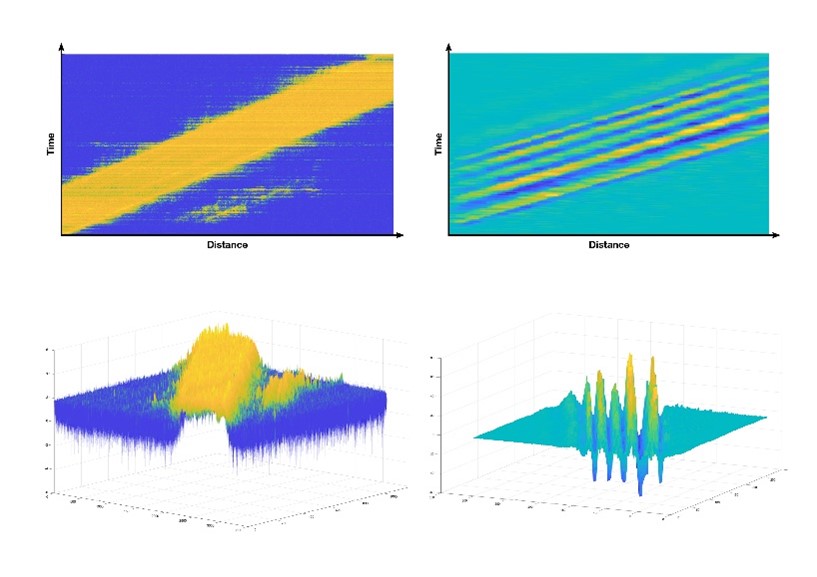
In contrast to older DAS systems (left), latest generations allow for phase measurement (right) and thus for deeper and more detailed insights into vibrational changes
Adding intelligence
Basically, what we do by means of DAS is to create a digital twin of all vibrations occurring along a monitoring fiber. The true art is now to read this SonicTwin. In other words: Visualising changes in the signatures of laser pulses is a first step towards translating raw data into actionable information. The common method for visualisation is to use so-called waterfall diagrams. These have time on the yaxis, but top-down instead of bottom-up. On the x-axis we see the distance that a pulse has travelled. As detection happens continuously, looking at such a diagram is always just a window into a constant flow of time. A single event occurring 2 kilometres away from the DAS unit will appear as a spot in the diagram that wanders down towards the x-axis, before disappearing as it leaves the time frame which is recorded. Objects that are vibrationally loud, but stationary would cause a vertical line in the diagram. In contrast, a moving train will trace a diagonal line in the waterfall. Sloping right or left, depending on which direction it is traveling.
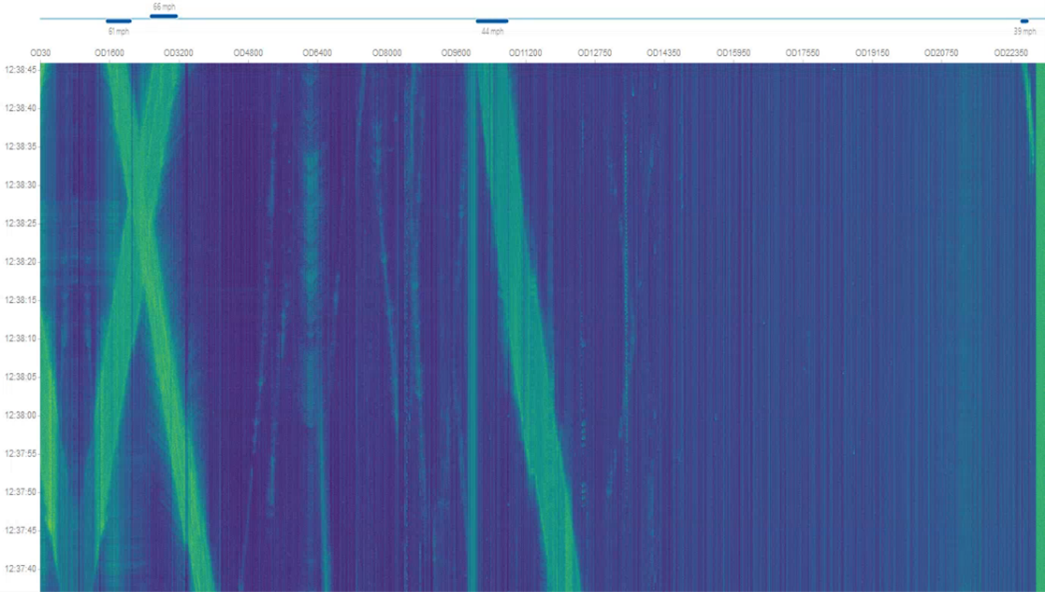
A typical waterfall diagram visualising static noises and trains. The broader a line, the longer the train.
Information provider for highly performant railways
Developing algorithms to automatically identify points of interest in DAS-generated waterfalls is Sensonic’s core competency. By combining the massive potential of this technology with an understanding of railway specifics and the industry’s requirements, we generate highly actionable information, that will empower operators, maintainers and security staff to make better decisions in daily business. The result: a future proof, highly performant railway industry that will be the first choice of mobility for generations

